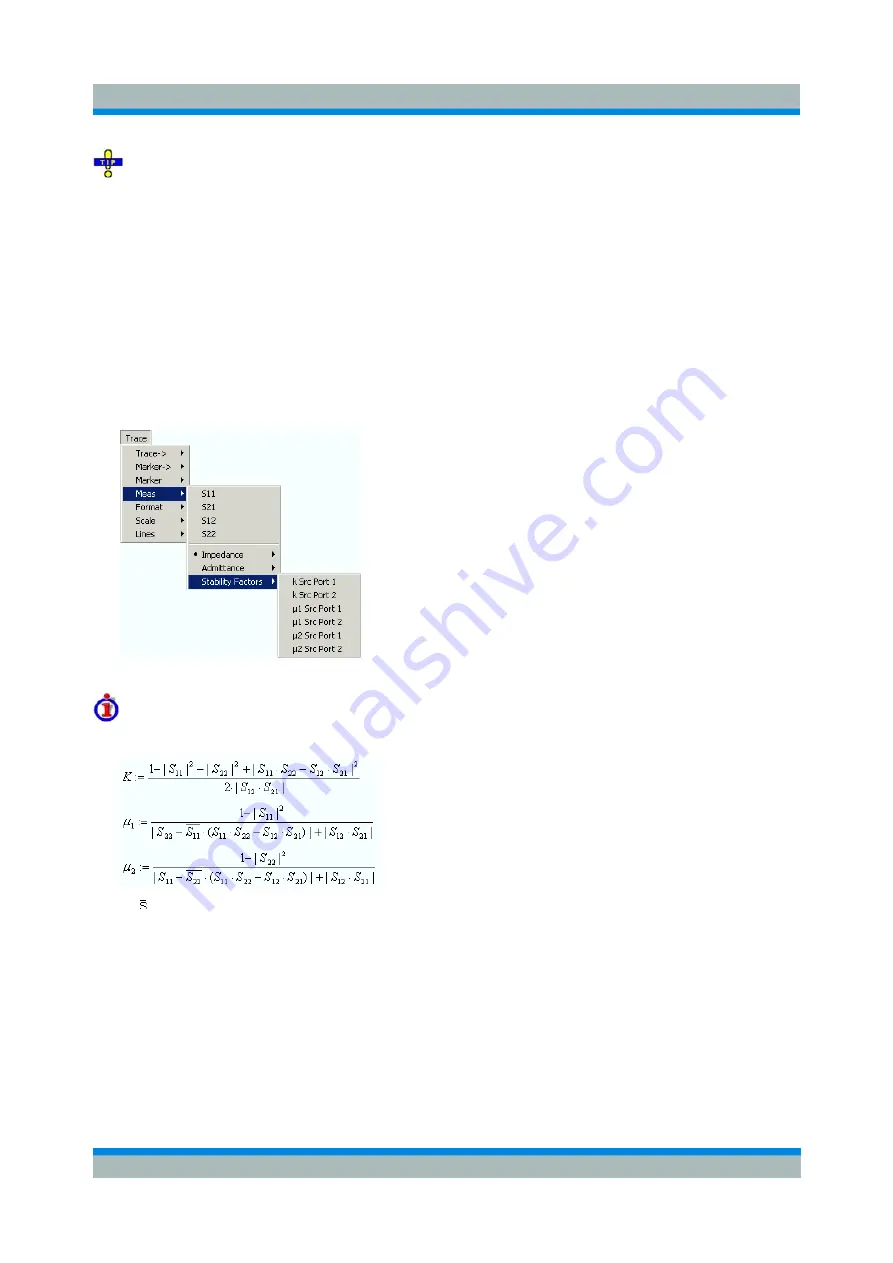
R&S ZVL
GUI Reference
Trace Menu
Operating Manual 1303.6580.32-06
191
Use the Inverted Smith chart to obtain an alternative, graphical representation of the converted
admittances in a reflection measurement.
Remote
control:
CALCulate<Ch>:PARameter:MEASure "<Trace_Name>", "Y-S11" | "Y-S12"
| "Y-S21" | "Y-S22"
[SENSe<Chn>:]FUNCtion[:ON] "...:POWer:Y<11 | 12 | 21 | 22>"
Create new trace and select name and measurement parameter:
CALCulate<Ch>:PARameter:SDEFine "<Trace_Name>", "Y-S11" | "Y-S12"
| "Y-S21" | "Y-S22"
Stability Factors
The
Stability Factors
submenu selects stability factors to be measured and displayed.
The three two port stability factors K, µ
1
or µ
2
are available.
Definition of stability factors and stability criteria
The stability factors K, µ
1
and µ
2
are real functions of the (complex) S-parameters, defined as follows:
where denotes the complex conjugate of S.
Stability factors are calculated as functions of the frequency or another stimulus parameter. They provide
criteria for linear stability of two-ports such as amplifiers. A linear circuit is said to be unconditionally stable
if no combination of passive source or load can cause the circuit to oscillate.
•
The K-factor provides a necessary condition for unconditional stability: A circuit is unconditionally
stable if K>1 and an additional condition is met. The additional condition can be tested by means
of the stability factors µ
1
and µ
2
.
•
The µ
1
and µ
2
factors both provide a necessary and sufficient condition for unconditional stability:
The conditions µ
1
>1 or µ
2
>1 are both equivalent to unconditional stability. This means that µ
1
and
µ
2
provide direct insight into the degree of stability or potential instability of linear circuits.






























